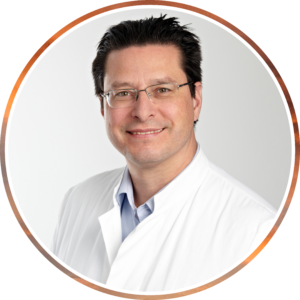KEYNOTE LECTURE
ABOUT OUR SPEAKER

Prof. Gero Hütter is recognised worldwide for being the first to cure AIDS. For his groundbreaking discovery, he was named to be one of the “Berliners of The Year” in 2008. In 2009, he became the head of the stem cell unit of the Institute of Transfusion Medicine and Immunology Mannheim of the Heidelberg University. He currently holds the position of Medical Director at the DKMS Collection Center.
Prof. Hütter has received a number of awards, including the Chugai Science Award in 2009, the Certificate of Honor offered by the Board of Supervisors of the City and County of San Francisco in 2010 and the Reminders Day Award in 2013.

